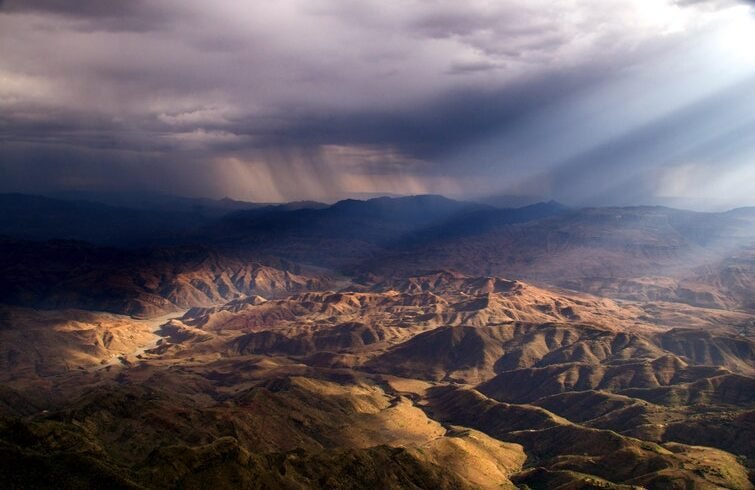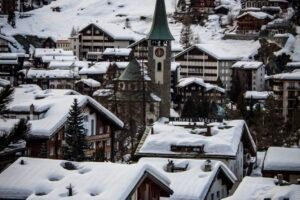
The primary time I visited Lalibela I used to be seven, Ethiopia
was a fairly totally different then.
However issues are altering. Regardless of its troubled previous,
Ethiopia is on the rise, the nation is the second most populous African nation
and the continents quickest rising economic system.
The nation’s tourism potential is big, and its many
landmarks are recognized to extra intrepid travellers. Ethiopia is each lovely and
rugged, its historical past essentially the most historical in Africa, its origins, these of all
mankind.

I returned to Lalibela in my 20s, I had yearned to see it
via grownup eyes and located myself experiencing nearly similar feelings of
marvel I had as a baby.
The second time I visited was by way of a solitary 10-hour bus trip from Bahir Dar, the regional capital of Amhara on the mouth of the Blue Nile. For some cause the bus stopped brief of the particular bus station and rotated, hobbling off precariously. It was at that time I observed that there was no transport to the precise city and remembered that I used to be in all probability carried there as a child.
The trek from my arriving level to the precise city was
solely about 3km and an expertise in itself. My trepidation to see the
rock-strewn church buildings once more after years, meant that I averted the city on
goal and went straight to Guess Giorgis or “Saint George” the postcard
Lalibela church I do know, however the picture was burned in my thoughts as a baby and I
needed to see if it had the identical impact. It did.


Backtracking, I visited the remainder of the church buildings (there are 12 in whole) the place I observed one thing I had not seen as a baby. Large metal pylons surrounded among the different shrines, together with the fabled “Tomb of Adam” and the adjoining “Bete Maryam” propping up large roofs defending the church buildings from the tough highland local weather (Lalibela is 2600m above sea stage).
I admit I used to be little bowled over from the conclusion of how precarious these constructions are, in addition to the undesirable distinction between fashionable in-your-face metallic and plastic columns hovering over these monuments to human ingenuity. However once I realized the locals didn’t thoughts them as a lot as the various overseas would-be photographers complaining in regards to the pylons ruining their shot, I nearly began appreciating them.

constructed to guard the construction primarily from rain
I had particularly chosen to go to throughout a lull within the
many spiritual festivities and pilgrimages for which the city is legendary for. As
a baby we had gone throughout Timkat, the Epiphany, which in line with the Julian
calendar nonetheless in use in Ethiopia is round “our” 19th or 20th
of January, with Christmas being celebrated across the 7th and eightth
of January and festivities held continuous throughout and for a while after the
dates.

As an grownup I had purposely selected (with only a pinch of
remorse) to go to throughout a much less frenetic interval, however it have to be stated, the festivities
are completely mesmerizing, inspiring a way of neighborhood, ancestral custom
and all-encompassing human empathy that has few equals on the planet.

Coming again to Lalibela had a profound impact on me. I
may cite 1,000,000 cause and results this return voyage had on me so all I
can do is give some recommendations.
The most typical solution to get to Lalibela is by airplane. Direct worldwide flights exist however can set you again over 1500 euros. The most affordable manner is an Ethiopian Airways inner flight from Addis Abeba, costing round 120 euros (although costs can drop as little as 40). Alternatively, the closest bus routes begin from Woldia (5-7 hours) or Bahar Dar (10 hours). Although the time frame could seem daunting, the trip other than being less expensive, gives constantly gorgeous views of the Amhara area highlands and full immersion in Ethiopian day-to-day life (nothing else beats unreliable public transportation in bringing individuals collectively).
Resorts are a loads in Lalibela. Beginning on the
equal of 15-20 euros an evening, with many additionally offering guides that, if
educated (lets simply say some know their stuff greater than others), may also help enormously
in navigating the subterranean tunnels connecting the church buildings in addition to
explaining the historical past of the location and which means of the intricate orthodox
Christian symbolism current within the type of work, sculptures and crosses
adorning each the inside and exterior in addition to different “secret” church buildings that
can be missed with out native steerage. For instance, though I personally did
not have a information, I finally eavesdropped on a dialog that delivered to
me to go to the final church on my itinerary, the “Temrehanna Kristos” monastery.
Just a few hours by automobile, weaving via the mountains that encompass Lalibela, it is perhaps one of the vital visually gorgeous and astonishingly positioned non secular buildings I’ve ever seen. Perched at 2600 metres below a small waterfall, though not carved out of the rock like its counterparts it may boast being a century older and having among the most original examples of Ethiopian orthodox frescoes in its inside, some over 800 years outdated. For a historical past scholar like me, this final vacation spot was the key spot to return again to.
I fondly remembered my first time in Lalibela as a baby, not a lot has modified (for me at the very least) besides possibly this time I can share the expertise with others.






